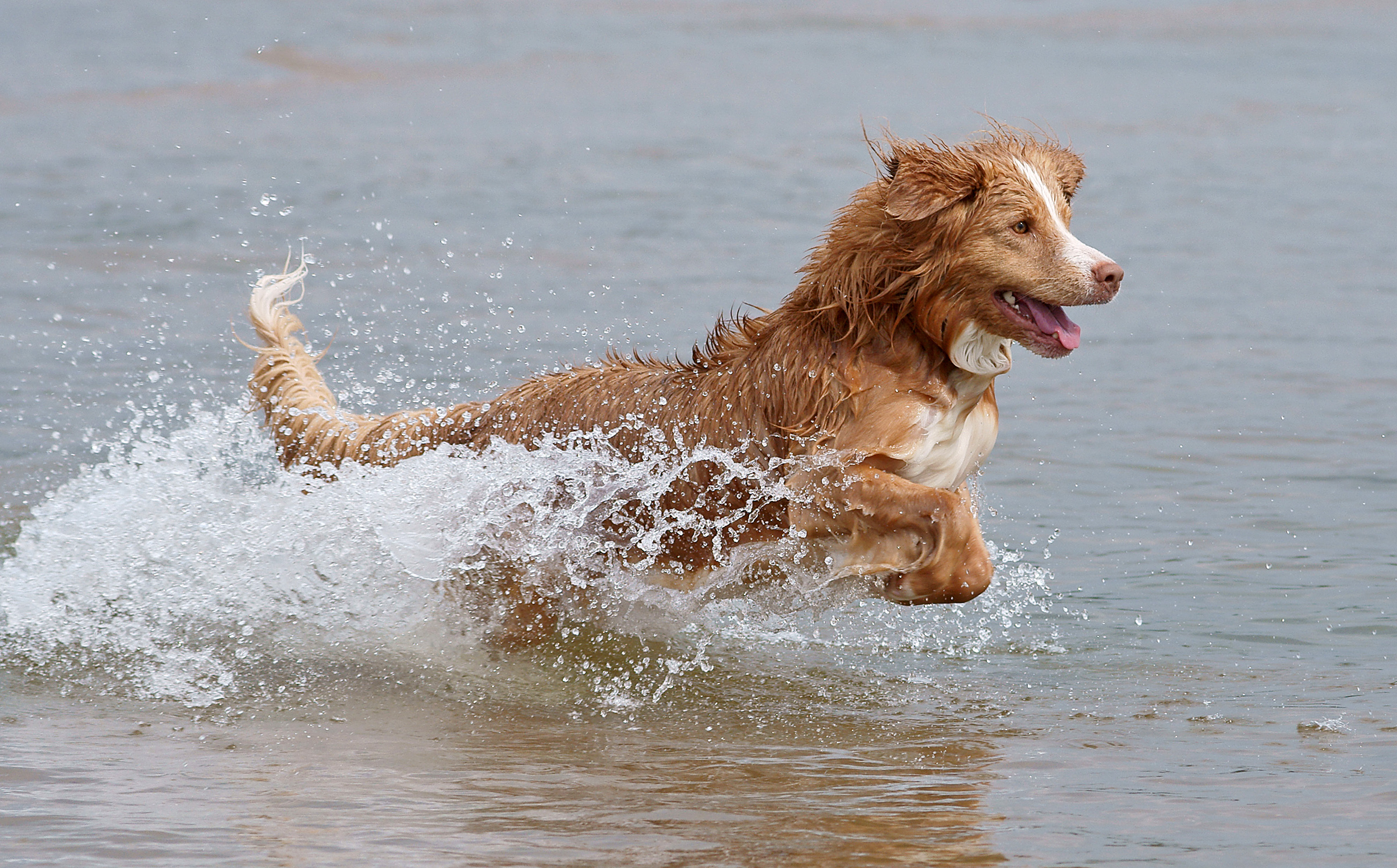|
|
Most dogs love the water. How can you encourage this natural affinity, with safety and enjoyment? In the following excerpt from Clicker Gundog by Helen Phillips you'll explore the important skill of swimming—valuable for all dogs, whether or not they are trained to hunt
While this article is written with hunting dogs in mind, the excellent principles apply to most any canine companion.

The skill of swimming
The majority of gundogs are natural swimmers and love nothing better than doing it for pure pleasure. There is a skill to it, and experience alongside confidence is also required. Some dogs find the paddling action difficult to master at first, causing them to lift out the water at the front end whilst the rear end sinks—lots of splashing but no movement. This is one of those skills where practice does make perfect.
Introduce a puppy or young dog to water as early as possible. I give my puppies bowls to play and splash about in from around 6 weeks on. The last litter of puppies found the new pond in the garden and introduced themselves to swimming at a very early age whilst watching the older dogs splash around and chase each other.
Begin by finding a pond or lake with still or very slow moving water. I would not recommend using the river for the first lessons, as the currents can be very strong. The water may be still on the surface but moving at great speed underneath. Watch out for the blue-green algae that appears early in the year; this can be very harmful and sometimes causes death (it is toxic to us as well).
Find somewhere that the dog can enter and exit the water easily via a gentle slope. Be prepared to enter the water with your dog. This may be all they need to build the confidence to take the first step. Taking a favorite toy may also be helpful if they are reluctant.
If your dog is a little hesitant, spend time playing in the shallows and gradually let them make their own choice to enter further. Click for the decisions and reward with chase for a toy or food if appropriate.
The dog will need to keep their body flat on the surface of the water and develop a paddling action with their feet. If your dog is having difficulty, then help them by supporting under their belly, slightly raising the back end until they are flat. Click for this position, and gradually reduce your involvement. Reward with a chase of a toy to the shore, or being allowed to leave the water.
Take your time and do not rush this. My first Vizsla fell in the river as a young dog. The shock of this was so great she never entered water again. She walked around puddles, in case they were deeper than they appeared; the trauma can have a lasting effect. Make sure your dog is confident in entering the water before introducing the retrieve. Using the retrieve to teach the swimming may work with some dogs, but the shock of entering the water may develop avoidance of both the retrieve and swimming in others.
Once established and your dog is confident, attach your swimming cue. This will be used to cue your dog to enter the water when building the chain with retrieve.
.jpg)
Shaking on cue
When leaving the water the dog will naturally wish to shake. This is normally no problem unless they are carrying game. The enthusiasm and force that is put into shaking results in the game having the appearance of a rag doll. It can also encourage the dog to grip tighter than normal so as not to let go, or the force throws the game from the dog's mouth. Capture the behavior and attach a cue.
- Set up the situation where the dog can leave the water easily and you can be in close proximity.
- As soon as the dog shakes, click, reward appropriately. This can be with verbal encouragement from you, continued shaking, or food if your dog will accept this, or even back for more swimming.
- Set up scenarios at home, douse your dog with the hosepipe and capture the shake from this. Dogs will shake even if a small amount of water is on the top of their head; they do not need the full body shower.
- Anticipate when the dog is going to begin the behavior and attach a verbal cue to it. Build on this until the behavior only happens when cued.
This can then be introduced when your dog is retrieving from water. The dog will deliver the retrieve to you on leaving the water and wait to be cued to shake.
If your dog is a little hesitant, spend time playing with them in the shallows and gradually let them make their own choice to enter further. Click for the decisions and reward with chase for a toy or food if appropriate.

0 comments:
Post a Comment